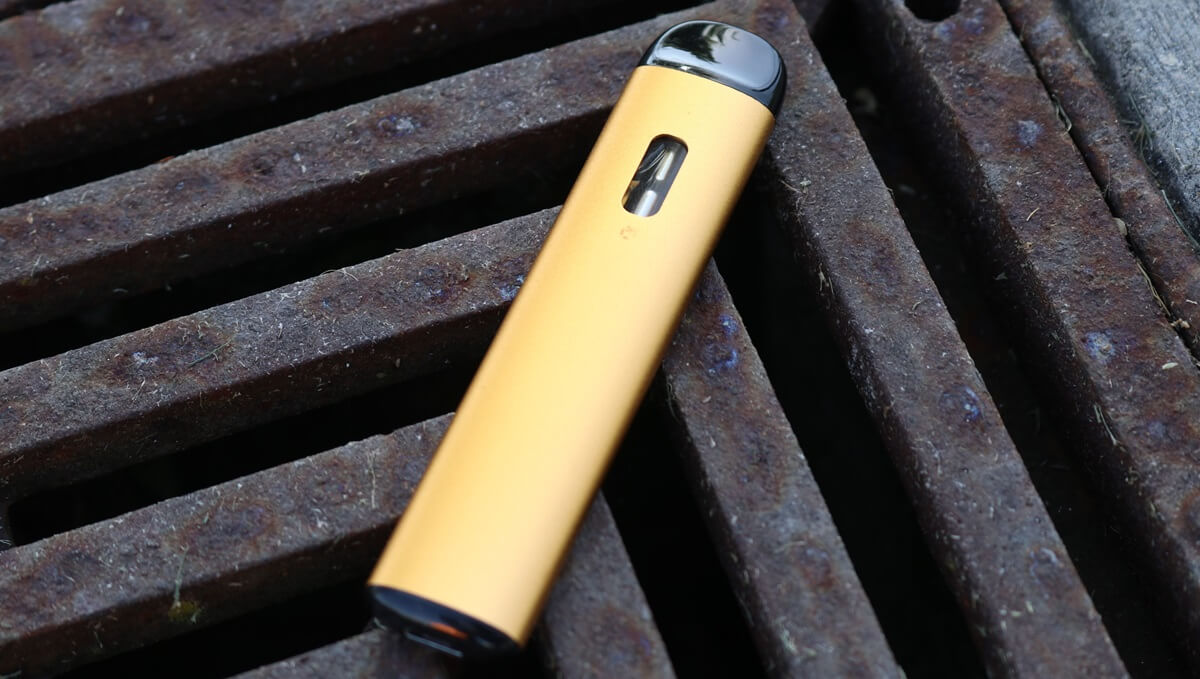The Nordic Nicotine Habit: Nicotine Pouches
A nicotine pouch is a small bag containing powdered nicotine, along with a number of other ingredients. They are used by placing the pouch between the gum and the lip for up to an hour, where nicotine is then absorbed. They give the user a similar sensation to that created by other nicotine replacement products, such as nicotine gum.
They stem from other “smokeless” tobacco products such as chewing tobacco, snuff, and snus, however, typically nicotine pouches do not contain tobacco leaves. They were originally started in the Nordic countries, where snus, a pouch containing tobacco leaf that is used in the same way as nicotine pouches, is far more common. In Sweden, the prevalence of smokeless products including snus was 12.3% in 2010, as opposed to 2.4% in the US in 2019.
The popularity of nicotine pouches has exploded in the last few years across the world, so in this article we will run through what different types there are, what they can be used for, and how they can affect your health.
What are Nicotine Pouches?
Whilst nicotine pouches typically contain a combination of nicotine, water, flavourings, sweeteners and plant-based fibers[4], there can be different names and colours used to describe them, so we’ll run through them below.
All-White Nicotine Pouches
“All-white” pouches describe those that contain no tobacco. The all-white label is to emphasize this lack of tobacco and is often used in marketing the product to the public.
White Nicotine Pouches
Most “white” pouches do not contain tobacco, however, a small number can contain tobacco where the leaves have been bleached. If this is the case it will usually be clear on the packaging.
Brown Nicotine Pouches
“Brown” pouches refer to traditional Swedish-style snus. These pouches do contain tobacco leaves, and as a by-product have more health risks than tobacco-free pouches.
What are the ingredients in Nicotine Pouches?
Nicotine pouches typically contain white powdered nicotine, alongside other ingredients such as food-grade additives, fillers, a product known as a stabilizer (such as hydroxypropyl cellulose) which helps keep the product in a consistent form, pH adjusters which aim to bring the pH of products up or down depending on where they are naturally acidic or alkaline making them more stable and finally sweeteners and flavorings to create a more consumable product.
Are Nicotine Pouches Legal?
The rules pertaining to nicotine pouches differ from country to country, but we have included below a summary of some of the most significant laws:
- Australia: As with e-cigarettes and heated tobacco products, nicotine pouches are banned from sale, and are only available with a prescription.
- New Zealand: The sale of snus is banned, however the sale of nicotine pouches is permitted, and a prescription is not required.
- USA: Nicotine pouches are regulated by the US Food and Drug Administration (FDA), which applies an age restriction and health warnings, but they are freely available for consumers to buy.
- EU: There is an EU-wide ban on snus, except for Sweden which has an exemption. However, nicotine pouches are not covered by current tobacco product regulations and are widely available for purchase without a prescription.
Usage of Nicotine Pouches
Nicotine pouches are used for a variety of different purposes. They are heavily advertised as a safer alternative to smoking, however, in the USA they have not been FDA-approved as a type of nicotine replacement therapy, like nicotine gum[4]. There is growing use of pouches in smoking cessation, and there is much research ongoing to investigate how their use could affect smoking habits overall. In fact, there are some suggestions that the higher usage of snus in Sweden may be a factor contributing to their unusually low smoking rates in men.
One of the concerns by governments and health professionals around the use and availability of nicotine pouches is similar to that of e-cigarettes. There are worries that they are primarily being used recreationally by people who otherwise were not smoking. In particular, there are concerns that they are being advertised to young adults[8,9], who as we will discuss later are particularly susceptible to nicotine addiction at a younger age.
Pros and Cons of Nicotine Pouches
As we dive deeper into the topic of nicotine pouches, it is beneficial to consider the pros and cons of nicotine pouches. Whilst there is a growing body of evidence looking at both sides of the argument, we must also be aware that these products are still relatively new, and more research is likely to be needed to explore their full long-term effects
Pros of Nicotine Pouches
Tobacco, and without doubt combustible tobacco (cigarettes) has many well-known health risks. 2 in 3 people who smoke cigarettes will die from a smoking-related illness. Nicotine pouches are a tobacco-free form of nicotine delivery, and thus any help they can provide to support the reduction in tobacco consumption can have a huge effect across the world population, where more than a billion people still consume tobacco products.
Researchers also found that nicotine pouches, even with a lower nicotine content, delivered that nicotine hit as quickly reaching similar blood concentrations as existing smokeless products. As such they concluded that pouches reduced tobacco withdrawal symptoms and helped smokers reduce or stop smoking on par with products like nicotine gum. Another study comparing the toxicant levels of different nicotine products, found pouches to have no difference to gum or lozenges. We should be conscious that traditional nicotine replacement therapies such as gum and lozenges have been around for a long time whilst being regulated as medicines, and an argument could be leveled that there could be the potential for more variation in products that aren’t regulated as medications such as nicotine pouches. It is still an interesting option that warrants more research to see whether nicotine pouches could provide another viable option for those people trying to quit smoking alongside the longer-standing nicotine replacement therapies such as patches and gum.
Cons of Nicotine Pouches
The main concern about nicotine pouches is the lack of long-term studies into their effect on health, and research such as high-quality longitudinal data that looks at repeated observations over time may take a reasonable length of time to be completed. Short-term side effects of the products are also worth pointing out, and they can cause a sore mouth, hiccups, and an upset stomach. Another major concern that is reasonable for all nicotine-containing products is the risk that they get used by non-smokers recreationally, and lead to nicotine addiction and use in people who had not previously been exposed to them. This has led to concern that nicotine products that pose lower risks than cigarettes lead to a ‘gateway effect’ and serve as a stepping stone to moving people to use higher-risk products such as tobacco in the future. We should also note that the same question of the gateway effect has been posed with e-cigarettes, and Public Health England previously concluded that “despite experimentation with these devices among never smokers, e-cigarettes are attracting very few young people who have never smoked into regular use”. It would be reasonable to assume that this may be similar to nicotine pouches, but research specifically looking at this mode of nicotine consumption would be worthwhile and beneficial to the evidence base.
This concern over gateway access is of particular concern if the strengths of pouches are not monitored well by the regulating authorities. Like with e-cigarettes, it is the responsibility of local authorities to police the strengths of products produced, ensuring they are accurate and as they are advertised.
Nicotine Pouches and Addiction
Nicotine is a highly addictive compound, and any nicotine-containing product is likely to lead to addiction. The use of different nicotine products is important, as when using a harm reduction model the aim should be to try and switch from a more harmful nicotine product to a less harmful product to reduce risk. By using nicotine pouches as a replacement for tobacco products such as cigarettes, the symptoms of withdrawal can be reduced, whilst at the same time reducing the huge health risks of smoking. Once someone has stopped using tobacco products and moved to a lower-risk product, the aim should then be to try and wean off nicotine pouches in a slower manner as their health is at less risk.
The counter-argument from some people would be that because these pouches contain nicotine, they can themselves be addictive. This is why governments are conscious about trying to limit their use in young adults, whose brains are more susceptible to addiction than older adults. Getting the balance right with access to nicotine products for those that are smoking, whilst limiting them from groups such as young people and people not addicted to higher-risk nicotine products is tough – and something that regulators and governments are approaching in different ways.
Nicotine Pouches and Your Health
Other than mild local symptoms, the biggest risk from nicotine pouches is ongoing nicotine addiction. As with cigarettes, the nicotine in pouches is a highly addictive substance. This is particularly the case with young adults, where a lack of full brain development increases the risk of addiction. This is why many smokers started in their teenage years and have struggled to quit since.
FAQs about Nicotine Pouches
What are the side effects of nicotine pouches?
Potential nicotine addiction, sore mouth, hiccups and upset stomach.
Are Nicotine pouches better than cigarettes?
Nicotine pouches do not contain tobacco, and as such contain a lot less of the toxins found in cigarettes.
Are Nicotine pouches better than vaping?
Both are tobacco-free forms of nicotine delivery. There is little evidence to compare them directly, but if either reduces someone’s use of tobacco, which has well-known health risks, they can be hugely beneficial.
Learn more about nicotine at Quit Clinics
If you would like to learn more about vaping, the laws around it, and the science and research behind it, check out some of our Quit Clinics blogs below.
- Traveling to Australia with nicotine vape products – What you need to know
- Vaping Laws in Australia – What you need to know
- 12 tips to help you quit smoking
- Government considering tightening the law on recreational vaping






